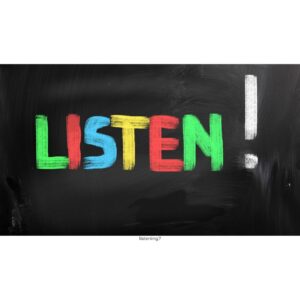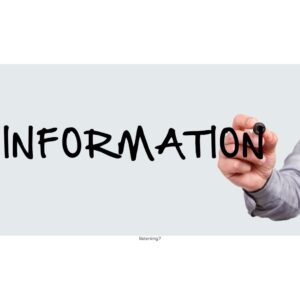Active Listening -Communication is more crucial than ever in today’s high-tech, high-stress environment, but we spend less and less time genuinely listening to each other. Genuinely attentive listening is becoming increasingly rare.
Active listening abilities can aid in the development of relationships, the resolution of problems, the understanding of others, and the avoidance of confrontation. You’ll boost your professional efficiency, as well as your capacity to lead a team, persuade, and negotiate, by being a better listener.
How to build self-confidence
What is the significance of listening?

The most basic component of communication skills is listening. Listening is an active activity in which a conscious decision is made to listen to and grasp the speaker’s messages.
Listeners should refrain from interrupting with questions or comments while engaged in active listening. Giving the other person time to explore their thoughts and feelings is part of active listening, and they should be allowed enough time to do so.
Self Motivation – Meaning and Types
We devote a significant amount of time to listening.
Several studies have emphasised the value of listening as a communication skill. According to statistics, we spend 70-80 percent of our waking hours communicating in some way. We spend approximately 9 percent of that time writing, 16 percent reading, 30 percent speaking, and 45 percent listening.
According to studies, the majority of us are poor and ineffective listeners. Most of us aren’t very good listeners; studies show that we only remember around half of what we hear in a discussion.
The advantages of active listening
Active listening has a number of major advantages, including:
.Builds deep trust – When you practise genuine listening, you invite individuals to open up. They can tell you’re not going to make snap decisions based on minor details. They also realise you care about them enough to pay attention. While developing trust takes time, the benefits are numerous, including lifetime friendships and the assurance of assistance in difficult times.
.It broadens your horizons – Your personal point of view on life is not the whole truth, nor is it how everyone else views it. Listening to other people’s opinions allows you to see life from a variety of angles, some of which you may not have considered previously.
.Improves your patience – Being a good listener takes time to develop, and it requires consistent work over time. However, as you improve your listening skills, you will gain patience as a natural side effect. Patience in allowing the other person to convey his or her true feelings and thoughts while without passing judgement.
.Makes you approachable – People are more naturally motivated to communicate with you if you present yourself as a patient listener. You give them the freedom to express their feelings by being there for them.
.Saves time and money – Effective listening not only minimises the danger of misunderstandings and mistakes that may be highly costly to a company, but it also saves time and money by reducing the need to redo a work or a project because the instructions were misunderstood. Employees do not squander time or money set aside for a specific project.
.As a leader, they should always be attentive to what employees have to say in order to discover and fix problems. They are the first to notice defects and make suggestions for improvement in the workplace. Listening to coworkers will help you figure out what has to be altered and improved in order to keep talent and create progress.
What characteristics distinguish an excellent listener?

Good listeners make an active effort to understand what others are trying to convey, no matter how muddled the messages may be. Listening entails not just decoding spoken messages but also interpreting nonverbal signs like facial expressions and body language.
Effective listeners make it a point to let people know they’ve been heard and to encourage them to completely express their feelings and opinions.
You should also use nonverbal clues to show that you’re paying attention, such as maintaining eye contact, nodding and smiling, and agreeing by saying ‘Yes.’ The individual speaking will usually feel more at ease after receiving this feedback, and will communicate more freely, openly, and honestly as a result.
There are four distinct listening styles.
The duty of a public speaker would be lot easier if listening were simple and everyone went about it in the same way.
1. A focus on people
The listener who is interested in individuals is interested in the speaker. They pay attention to the message in order to learn how the speaker thinks and feels about it. When people-oriented listeners hear an interview with a famous musician, for example, they are more likely to be interested in the performer as a person than in the music.
2. Task-oriented or action-oriented
Listeners that are action-oriented are primarily interested in learning what the speaker desires. Is it votes, donations, volunteers, or anything else that the speaker is looking for? Listening through the descriptions, evidence, and explanations with which a speaker builds his or her case can be challenging for an action-oriented speaker.
When you’re a passenger on an aeroplane, for example, a flight attendant gives you a quick safety briefing. Only buckle up, says the flight attendant, and we’ll be on our way. Buckling up is a more powerful message to an action-oriented audience than a message about the underlying reasons.
3. Information

Listeners that are content-oriented are interested in the message itself, whether it makes sense, what it means, and how accurate it is. Listeners who are interested in learning more about a topic want to hear well-developed information with clear explanations.
4. The passage of time
People that listen in a time-oriented manner like messages that go right to the point. Slow delivery or long explanations can irritate time-conscious listeners. If the speaker expects a longer focus of attention, this type of listener may only be receptive for a short period of time before becoming impolite or even angry.
Read The Importance of Listening – Listening Styles to discover more about listening styles.
Active listening examples
Here are some statements and questions that can be utilised with active listening:
.”So, you want us to build the new school in the style of the old one?” I paraphrase.
.”I appreciate the time you’ve taken to chat with me,” says the speaker.
.Posing open-ended inquiries – “I understand you are dissatisfied with your new vehicle. What modifications may we make?”
.Inquiring about specifics – “How many people did you hire last year?”
.Bringing up circumstances that are similar – “After my former firm laid me off, I was in a similar scenario.”
.During an interview, a job candidate who sums up their understanding of an unclear question is known as a summarizer.
.Observe who is speaking – A meeting facilitator encourages a silent team member to express their thoughts on a project.
.Summarize group chats – A manager summarising what was stated in a meeting and confirming it with the others.
